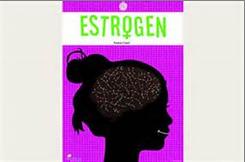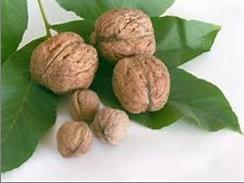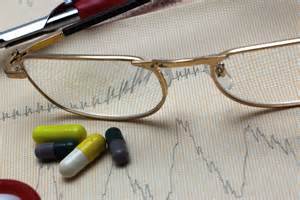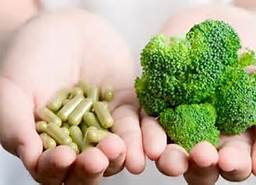What You Need To Know
About Hormones
in Menstrual Women
About Hormones
in Menstrual Women

|
Leon Eldred |
Menstruation is the monthly shedding at the lining of a woman's uterus. The stages of the menstrual cycle are triggered by the rise and fall of hormones. The pituitary gland in the brain and the ovaries in the female reproductive tract manufacture and release hormones at certain times during the menstrual cycle. These hormones cause the organs of the reproductive tract to respond. The uterus consists of three layers of tissue. The middle layer forms the bulk of the uterine wall and consists of smooth muscle fibers. The inner layer is a mucous membrane that contains many glands, and it is part of this layer that is shed each month. Prostaglandins are potent substances produced by most cells and have a wide variety of effects on the body. They mimic hormones. Menstruation is just one body process in which they participate. Some of the features of normal menstruation include:
- A healthy balance of prostaglandins, which leads for example, to normal contraction of the smooth muscle layer of the uterus and normal blood flow to the uterus
- A healthy balance of the female hormones estrogen and progesterone, which means there is less susceptibility to spasms caused by the prostaglandins. Cramps can occur as a consequence of normal menstruation also.
Though it can be uncomfortable and sometimes inconvenient, your period is your body's way of telling you that your reproductive system is working properly. Just as every woman is unique, every woman's period has its own personality. Some periods are short, others are long. Some are heavy, others are light.
After a few years' worth of monthly bleeding, most women start to get a feel for their period's frequency, duration, and flow. When something out of the ordinary happens - such as spotting between periods or an exceptionally heavy flow - it's natural to wonder what's going on. The average woman's menstrual cycle is 28 days long, and the average period lasts for three to five days, but there can be huge menstrual cycle variations from woman to woman. "Three days is normal for some women, seven days is normal for others," says Franklin Loffer, MD, executive vice president and medical director of AAGL. The normal period flow can be heavier in some women than in others. Rather than worrying about the length or frequency of your period, you need to consider whether anything has changed. "A woman should really be tracking her own menstrual cycle, because it provides huge numbers of clues about whether something's not right," says Frances Ginsburg, MD, director of reproductive endocrinology at Stamford Hospital in Stamford, Conn.
The ovaries are female reproductive glands about the size of a large almond, one ovary located near each side of the uterus. The ovaries produce the hormones estrogen, progesterone and traditionally male hormone testosterone, which control the development of sexual organs and secondary sex characteristics, including the placement of the fat layer around the body. They all work along with the unisex follicle stimulating hormone (FSH) and luteinizing hormone (LH) from the pituitary gland. All of these hormones, together, have specific functions in a normal female reproductive system.

Rabbi Harold Kushner
Estrogen is the general term used for the several types of estrogen made by the ovaries, and to a lesser degree, the testes. Estrogen is also made in fat cells (which is the primary site of production for both menopausal women and men.) Estrogens are steroids. The three major estrogens are: Estrone, E1-5-10%, Estradiol, E2-5-10% (considered the "strongest" estrogen because of its ability to cause cell proliferation about 100 times stronger than the other two main estrogens) and Estriol, E3-80-90%.
Estrogen gives the fat layer around a female body (just below the skin), it feminizes bodies, and it causes the development of the female sex organs - the breasts, uterus, fallopian tubes, and vagina. This hormone is produced mainly by the ovaries, but also by the adrenal glands and fat cells. Estrogen has bone-making qualities as well as an effect of connecting the ends of bones together. This is why women are shorter than men, because of the closing of bone plates. Estrogen makes the skin soft and smooth. Estrogen has a slight effect of sodium retention. When estrogen is increased excessively, a woman can accumulate surplus fat not only under the skin as cellulite but on the buttocks, the outer thighs and just below the bellybutton. This fat (potential energy) can then be used during pregnancy to help the survival of the infant.

Adelle Davis
Progesterone is a steroid hormone produced in the ovaries and adrenal glands. One of its main roles is to balance estrogen. Progesterone is also produced by the brain and peripheral nerves, and possibly other locations. Normally, women have much more progesterone at any given time, than estrogen. Progesterone stimulates the uterine lining during the latter half of the menstrual cycle to get ready for potential implantation. It also seems to protect the fetus during growth, and keeps the mother's immune system from rejecting the fetus as foreign. Women who have had repeated late miscarriages sometimes require progesterone therapy to be able to carry a baby to term. The levels of progesterone drop right before labor, allowing for the contraction of the uterine muscle and the start of lactation.

Buddha
Testosterone is a steroid androgen hormone produced in small, fairly stable levels in the ovaries and adrenal glands. It is made from the precursor’s progesterone, and especially the androgen DHEA, in the steroid hormone pathway. Testosterone is an anabolic hormone, meaning that it helps to build body structures. Testosterone is usually associated only with males, but plays an important function in females as well. This steroidal hormone influences sexual drive in women. Women in their 20s appear to have the highest levels of testosterone in their system. Studies have shown that, in small doses, testosterone therapy can help women with a failing sex drive, particularly following menopause. Too much testosterone can reshape the female body and produce other negative effects, such as unwanted hair growth.
- What functions of estrogen
- What impacts on your estrogen and progesterone ratio and hormonal balance
- Symptoms that can be experienced with improperly working ovaries
- Functions of progesterone
- Symptoms of progesterone deficiency
- Symptoms of progesterone excess
- Problems with Progestin
- Functions of testosterone
- Symptoms of testosterone deficiency
- Symptoms of testosterone excess
- What kind of menstrual cycle changes occur











